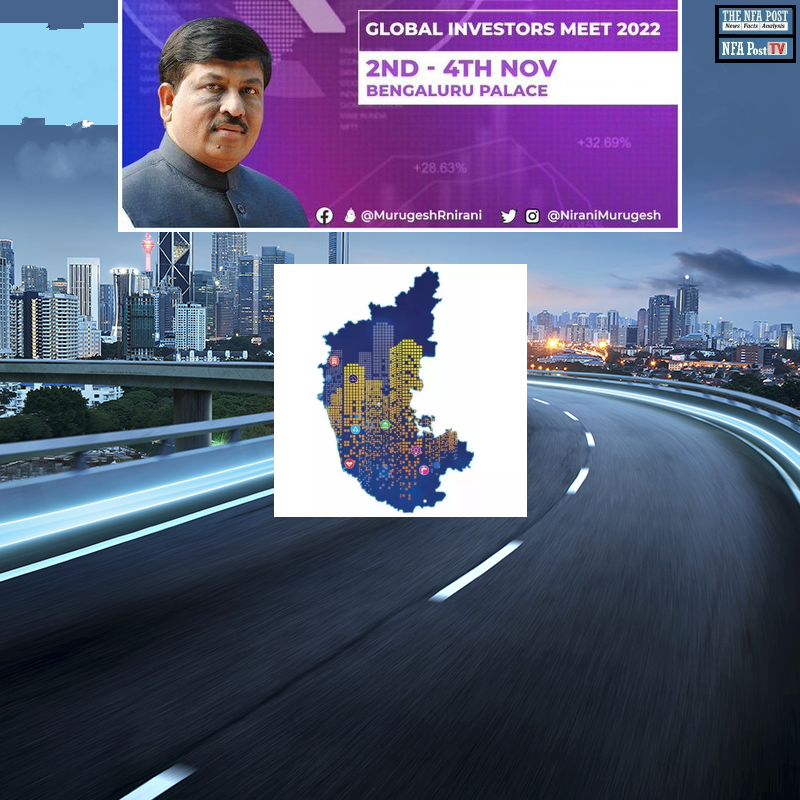Bengaluru, NFAPost: The Central government’s recent move to develop over 100 Smart Cities in the country to meet the growing population and infrastructure challenges, will bring about a sea-change for the citizens. Of these, work on seven such cities in Karnataka is already underway and will prove extremely beneficial to the residents and businesses alike.
Once the projects are completed in the next few years the cities, including Bengaluru, Mangaluru, Hubli-Dharwad, Belagavi, Shimogga, Davengere and Tumkuru, will see an overall improvement in their urban eco-system including economic, institutional, social and physical infrastructure.
The union government’s avowed objective is to make existing facilities user– friendly, with emphasis on better roads, pavements, public transport, parks and street lights, among other things.
Under the Smart City mission, as it is called, the central government has earmarked financial support exceeding Rs 48000 crore over five years to the states concerned. In fact, an equal amount, on a matching basis, is likely to be made available by the state governments and urban local bodies , through municipal bonds, allied programmes and borrowings.
Of the total amount, officials explained, almost 45 per cent is accounted for by mission grants, 21 per cent each through convergence and Public -Private Partnerships(PPP), with the balance coming from related sources.
In this context, it is important to remember that the Smart City concept is based on six fundamental principles by keeping the community at the core, realising more from less, cooperative and competitive federalism. This is in addition to integration, innovation, sustainability ,coupled with focus on technology as the means, not the goal. Not to forget, of course, the sectoral and financial convergence.
Meanwhile, the guidelines for Smart Cities that were released by the central government, envisage the constitution of a Special Purpose Vehicle for each of the cities where the programme is under implementation.
The SPVs ensure autonomy in decision making , not to speak of “mission implementation while assuming responsibility for all actions from planning, approval, release of funds, execution ,operation and evaluation of the works, according to the officials concerned.
All this will bring about “city-wide development by applying or retrofitting intelligent solutions, technology and data to the available urban infrastructure.
In short, Karnataka’s Smart Cities will provide citizens with both immediate and gradual benefits, ranging from better traffic conditions to reduction in crime, efficient emergency services, ease of access to real-time information about a variety of services and more.
Leveraging technology to benefit citizens
The objective clearly being to leverage technology, information and data to improve infrastructure and allied services ; to provide Karnataka citizens immediate and gradual benefits.
Above all, the advantages will not be enjoyed only by the citizens where the Smart City mission is being implemented. “ The ripple effect of a better life and infrastructure will benefit larger sections of the population in the state, improving their lifestyle. Importantly, the government will also save costs besides optimising revenue through such development.
This is because the central government has taken two approaches for the development of the Smart Cities,namely Area Based Development and the Pan City initiative.
The first focuses on the development of physical infrastructure in the cities, with varying approaches for each , including redevelopment and Greenfield.
The second,namely, the Pan City initiative, will help the entire population of the city concerned, the result of simplified processes ,making citizens lives easier : facilities like efficient utility connections, not to forget payment of property taxes.
The plan is for all Smart Cities to have dedicated Command and Control Centres to leverage technology, with a view to improving the lives of citizens in these cities. Safety, smart parking, street lights, garbage disposal are some of the added activities that these centres will monitor.
Many of the Smart City projects will be implemented with convergence of plans and resources of other civic bodies and agencies. For instance, improving mobility of citizens needs infrastructure like footpaths, bicycle lanes, skywalks and more investment in public transport. This would encourage people to opt for non-motorised transport for short distances and the use of the metro or buses for longer commutes.
The Bengaluru Focus
The IT capital which was a late entrant to the Smart City mission, however, assumes importance with its SPV,namely ,BengSCL , short for Bengaluru Smart City Ltd , being clear about its goals.
The objective being: to make the IT city liveable—healthy ,vibrant, connected and objective. These , as officials in Bengaluru explain, include:
a) Provision of services to citizens and stakeholders while responding to their needs and interests in a professional manner.
b) Plan and manage the operations as responsible stewards of natural resources and the environment.
c) Ensure a high level of safety awareness for the employees and the public while respecting their contribution for the overall success of the all important mission..
For the record, BengSCL has finalised about 30 projects so far of which 13 deal with Tender Sure , involving Rs 455 crore, it is learnt . The SPV, to re-emphasise, focuses on getting appropriate approvals and sanctions for the projects for execution of the Smart City proposals.
This is in addition to complying with the directions of the union ministry of urban development and allied central agencies as also the state besides ensuring timely completion of projects under the mission.
In addition, the SPV incorporates joint ventures while entering into PPP arrangements for implementing the Smart Cities Mission.
(Written by Tyagaraj Sharma)





